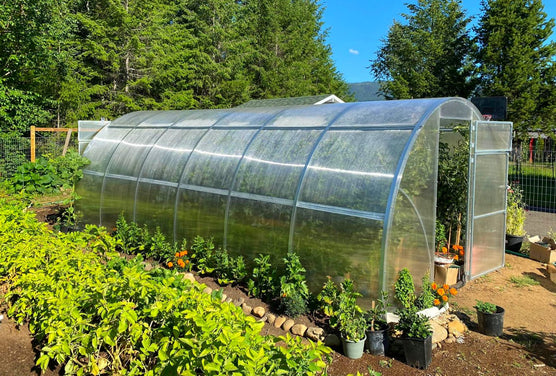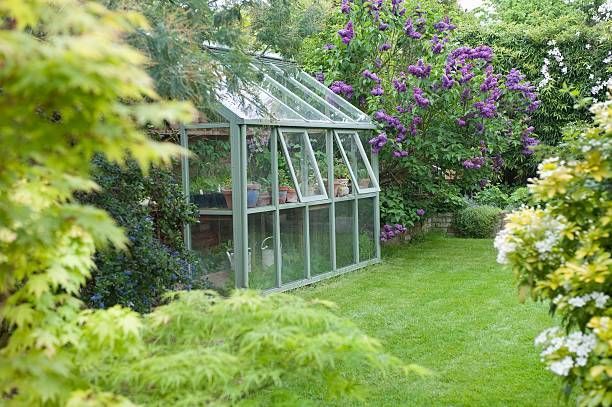Monarch Greenhouse Utah: Elevating Growing Spaces with Accuracy Construction
Wiki Article
The Future of Greenhouses: Innovations in Sustainable Agriculture
Are you interested concerning the future of greenhouses and how they are revolutionizing lasting farming? Look no more! In this article, we will explore the amazing innovations that are leading the way for a greener and a lot more effective farming market. From innovative environment control systems to upright farming methods, water-efficient irrigation approaches, renewable resource assimilation, and smart data analytics, these developments are transforming the way we grow our food. Obtain prepared to find the future of sustainable agriculture in greenhouses!Advanced Climate Control Solution
To attain ideal expanding problems, you can depend on the improvements in greenhouses with sophisticated climate control systems. These systems have actually transformed the means we grow plants, providing a regulated atmosphere that is conducive to plant growth. With these ingenious systems, you can now control temperature, humidity, light degrees, and even carbon dioxide concentrations to develop the excellent problems for your plants to grow.One of the crucial attributes of these innovative climate control systems is their capacity to regulate temperature level. By utilizing sensors and automated controls, the greenhouse can readjust the temperature based upon the details requirements of the plants. This makes sure that they are never revealed to extreme warmth or chilly, which can be destructive to their growth.
Moisture control is an additional important facet of these systems. By maintaining the suitable humidity degrees, you can stop problems such as mold, mildew, and condition from impacting your plants. These systems can likewise regulate the amount of light that reaches the plants, making certain that they get the optimal quantity for photosynthesis.
In addition, progressed environment control systems can also adjust CO2 focus. By raising the levels of carbon dioxide in the greenhouse, you can enhance plant growth and efficiency. This is particularly useful in areas with reduced natural carbon dioxide degrees.
Upright Farming Techniques
One essential vertical farming technique is utilizing piled growing systems. Piled growing systems are commonly made use of in metropolitan locations where space is restricted.One popular technique is referred to as vertical hydroponics, where plants are grown in nutrient-rich water without soil. This strategy is highly effective as it minimizes water use by up to 90% contrasted to conventional farming techniques. Furthermore, given that the plants are grown inside, they are shielded from illness and pests, reducing the demand for chemicals.
An additional strategy is aeroponics, which involves putting on hold the plant roots in a mist or air setting. This technique enables for ideal nutrient absorption and oxygenation, leading to faster growth and greater yields. Aeroponics also makes use of much less water than typical farming and can be executed in vertical systems, making it a prominent option for vertical farming.
Water-efficient Watering Methods
Maximizing water preservation is important when it involves implementing water-efficient watering techniques in lasting farming. With international water shortage becoming a pressing problem, it is crucial to develop innovative strategies that enhance water use in greenhouse operations.One promising method is drip irrigation, which provides water directly to the plant roots, decreasing waste and evaporation. By using a network of tubes with little emitters, water is used gradually and specifically, making certain that plants get the required dampness without excess drainage.
One more effective technique is using dirt wetness sensors. These tools determine the moisture web content in the dirt and supply real-time information to farmers. By monitoring the soil's wetness levels, farmers can properly figure out when and just how much water to use, preventing over-irrigation.
Additionally, the application of rainwater harvesting systems is acquiring appeal in greenhouse agriculture. Accumulating rain from roofs and Monarch Custom Greenhouse Utah keeping it in storage tanks allows farmers to utilize this all-natural source for watering objectives, decreasing dependence on conventional water resources.
Last but not least, the adoption of automated irrigation systems can substantially boost water effectiveness. These systems utilize sensing units to identify dirt dampness levels and weather condition problems, changing watering routines as necessary. By enhancing water usage based on real plant needs, these systems can decrease water waste and advertise sustainable farming practices.
Renewable Resource Assimilation
Sustainable power assimilation in greenhouses provides numerous advantages, including minimized running prices and reduced dependence on non-renewable energy resources. The created power can then be made use of to run numerous procedures within the greenhouse, such as home heating, ventilation, and illumination systems. These wind turbines harness wind power and transform it right into electricity, which can be utilized to supplement the energy needs of the greenhouse.Smart Data Analytics and Automation
To improve the efficiency of your greenhouse operations and optimize source use, consider implementing clever data analytics and automation. Smart information analytics involves gathering and analyzing information from different sensing units and gadgets within your greenhouse.
This can consist of automating the control of illumination, ventilation, watering systems, and nutrient shipment. By automating these procedures, you can make certain that your plants get the ideal conditions and nutrients at the appropriate time, without the requirement for constant hands-on intervention.
In addition, smart information analytics and automation can collaborate synergistically. The information accumulated by sensing units can be made use of to inform computerized systems, enabling them to make real-time changes based on the current conditions. This integration of information analytics and automation can lead to extra accurate and reliable resource allocation, inevitably leading to greater returns and better crop high quality.
Conclusion
In conclusion, the future of greenhouses in sustainable agriculture looks encouraging. With sophisticated environment control systems, vertical farming strategies, water-efficient irrigation techniques, and renewable resource assimilation, greenhouses are becoming a lot more eco friendly and effective. Furthermore, using smart information analytics and automation better boosts performance and reduces waste. These innovations are leading the way for a more efficient and lasting farming market, ensuring a greener and healthier future for all.
By optimizing water use based on actual plant requirements, these systems can lower water waste and promote lasting farming techniques.

Report this wiki page